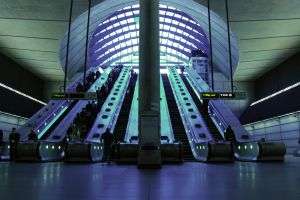The Lighting for Rail Conference 2014 took place yesterday.
At the conference, Rail engineering consultant, David Burton, said:
You wouldn’t do a railway lighting project these days without some sort of controls. Tfl and Network Rail are very keen to make sure controls are adapted to how an operator is going to use the area. Operators are very good at defeating controls if they don’t do exactly what they want, or what they expect. What they want is certainty.
Senior asset engineer for Network Rail, Terry Denyer, agreed with Burton. He said:
The first time the lights don’t work the way the other person on site expects, that’s when they get overridden. Generally it’s for safety.
Shae Gilbert, a consultant for Integra, said:
There’s a big requirement from the Network Rail and Transport for London side to educate the operator in how controls should be used to the best advantage. My experience is that controls are delivered but people don’t know how to use them and it all becomes a big waste of time and money.
It is clear that the opinions of many is that rail lighting is resistant to new technology and tends to stick to a more traditional lighting scheme. However, at the conference there was much debate about the industry’s acceptance.
Publisher of Lux magazine, Gordon Routledge, said:
What you’ve got is a very fast-moving technology in a very slow-moving industry.
Manufacturer of Dexeco, Darren Ward, said:
I think the rapid development of technology has been one of the barriers against adoption. There’s a period now where people are looking for the technology to stabilize before investments are made.
Burton disagreed with Routledge and Ward, he said:
Innovative lighting solutions are welcomed, much more than they once were.
Gilbert talked about the ‘battle’ of getting LED lights on the Tube. He said:
Some of the resistance was for sound engineering reasons but it was an uphill struggle to combat resistance to change. It’s a safety critical organisation.
Stations engineering manager for London Underground, Bob Benn, said:
We’ve managed to change it all to LED lighting but that’s been a major challenge in London Underground in order to get that through the system. We’re basically dealing with an obsolete design. From the point of view of whole-life cost, we’re very aware of the reduced maintenance of new technology.
Commercial project manager at Transport for London’s procurement department, Leon Smith, said:
Working in an organisation that’s receiving public funds, you’re risk averse. We’re looking to do industry to know what the direction of travel is, so the specification are robust and flexible.
